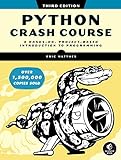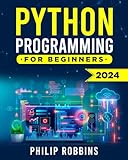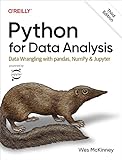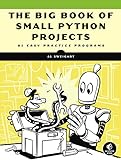To convert an Excel file to JSON using pandas, you first need to import the pandas library in your Python script. Next, you can use the read_excel function to read the Excel file and store it as a pandas DataFrame. Once you have the data in a DataFrame, you can use the to_json function to convert it to a JSON format. Specify the orientation parameter as 'records' to create a JSON object where each row represents a record. Finally, you can save the JSON data to a file using the to_json function with the file path as an argument. This process allows you to easily convert Excel files to JSON using pandas in Python.
How to convert JSON to a Pandas dataframe?
You can convert a JSON object to a Pandas dataframe using the pd.read_json() function in Pandas. Here's how you can do it:
1 2 3 4 5 6 7 8 9 10 11 12 13 14 15 |
import pandas as pd import json # Sample JSON data json_data = { 'name': ['Alice', 'Bob', 'Charlie'], 'age': [25, 30, 35], 'city': ['New York', 'San Francisco', 'Los Angeles'] } # Convert JSON data to Pandas dataframe df = pd.read_json(json.dumps(json_data)) # Display the dataframe print(df) |
In this code snippet, we first import the required libraries - pandas and json. Next, we define a sample JSON object json_data. We then use the pd.read_json() function to convert the JSON data to a Pandas dataframe and store it in the variable df. Finally, we print the dataframe using print(df).
This is a simple example, and you can adapt the code to suit your specific JSON data structure.
How to merge two dataframes in Pandas?
To merge two dataframes in Pandas, you can use the pd.merge() function.
Here is an example of how to merge two dataframes:
1 2 3 4 5 6 7 8 9 10 11 12 13 14 15 |
import pandas as pd # Creating two sample dataframes df1 = pd.DataFrame({'A': ['A0', 'A1', 'A2', 'A3'], 'B': ['B0', 'B1', 'B2', 'B3'], 'key': ['K0', 'K1', 'K0', 'K1']}) df2 = pd.DataFrame({'C': ['C0', 'C1', 'C2', 'C3'], 'D': ['D0', 'D1', 'D2', 'D3'], 'key': ['K0', 'K1', 'K2', 'K3']}) # Merging the two dataframes on the 'key' column merged_df = pd.merge(df1, df2, on='key') print(merged_df) |
In this example, we have two dataframes df1 and df2 with a common column 'key'. We use the pd.merge() function to merge the two dataframes on the 'key' column. The resulting merged_df dataframe will contain all the columns from both df1 and df2 where the 'key' values match.
You can also specify different types of merges (e.g. inner, outer, left, right) and merge on multiple columns if needed by passing additional arguments to the pd.merge() function.
What is the structure of a JSON object?
A JSON object is a collection of key/value pairs where keys are always strings, and values can be strings, numbers, arrays, JSON objects, boolean values, or null.
The structure of a JSON object is as follows:
{ "key1": "value1", "key2": "value2", "key3": { "nestedKey1": "nestedValue1", "nestedKey2": "nestedValue2" } }
In the above example, "key1", "key2", and "key3" are keys, and "value1", "value2", and the nested object are their corresponding values. Each key/value pair is separated by a comma, and the entire object is enclosed in curly braces.
What is JSON formatting?
JSON (JavaScript Object Notation) is a lightweight data-interchange format that is easy for humans to read and write and easy for machines to parse and generate. JSON can be used to represent complex data structures and is commonly used in web applications for transmitting data between a server and a client.
JSON formatting is the way in which data is structured and represented in JSON. JSON data is organized in key-value pairs, with keys and values separated by a colon and multiple key-value pairs separated by commas. JSON objects are enclosed in curly braces { }, while arrays are enclosed in square brackets [ ].
Here is an example of JSON formatting:
{ "name": "John Doe", "age": 30, "location": "New York", "pets": ["dog", "cat"] }
In this example, we have an object with four key-value pairs: "name", "age", "location", and "pets". The value of "pets" is an array containing two strings. This is a simple example of a JSON formatted data structure.
How to save a Pandas dataframe as a JSON file?
You can save a Pandas dataframe as a JSON file using the to_json method. Here is an example code snippet to save a Pandas dataframe as a JSON file:
1 2 3 4 5 6 7 8 9 10 11 |
import pandas as pd # Create a sample dataframe data = { 'col1': [1, 2, 3], 'col2': ['A', 'B', 'C'] } df = pd.DataFrame(data) # Save the dataframe as a JSON file df.to_json('output.json') |
In this example, the to_json method is used to save the dataframe df as a JSON file named output.json. The JSON file will contain the data from the dataframe in JSON format.









